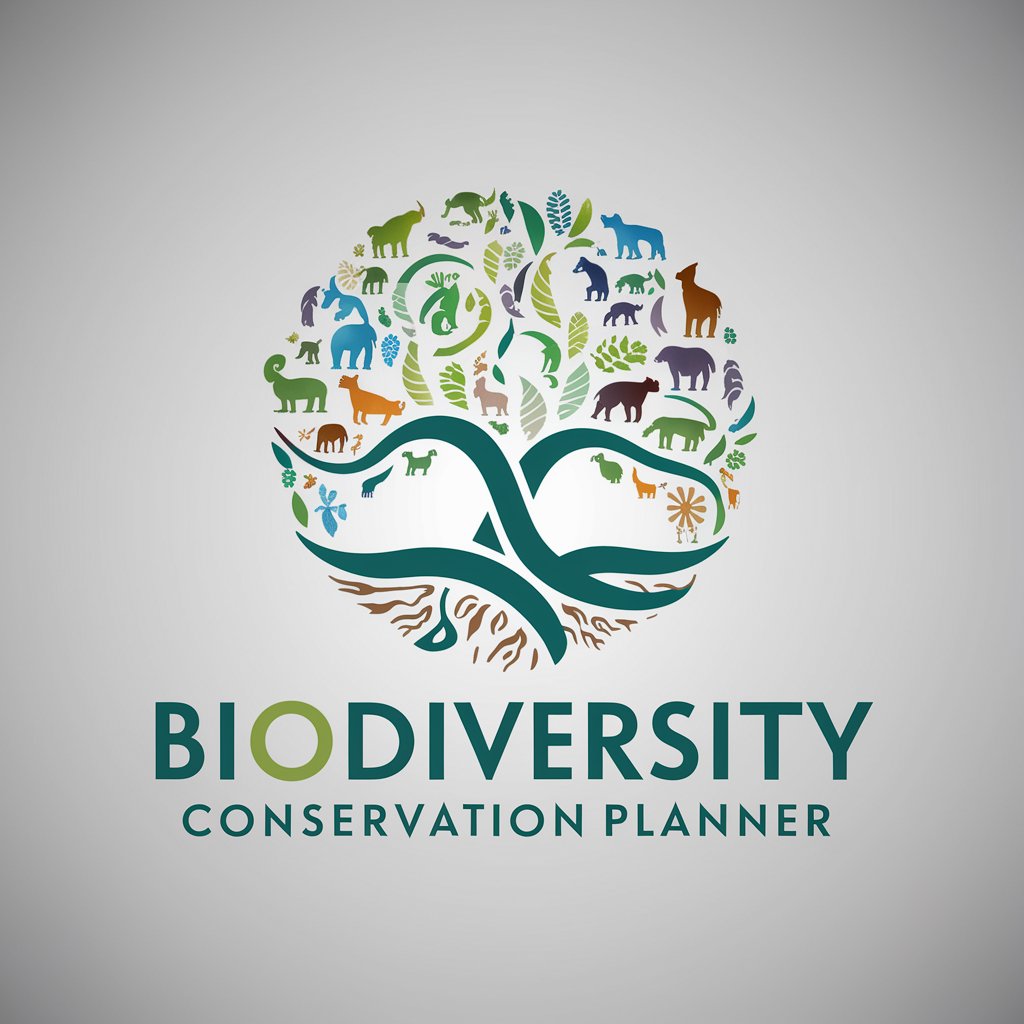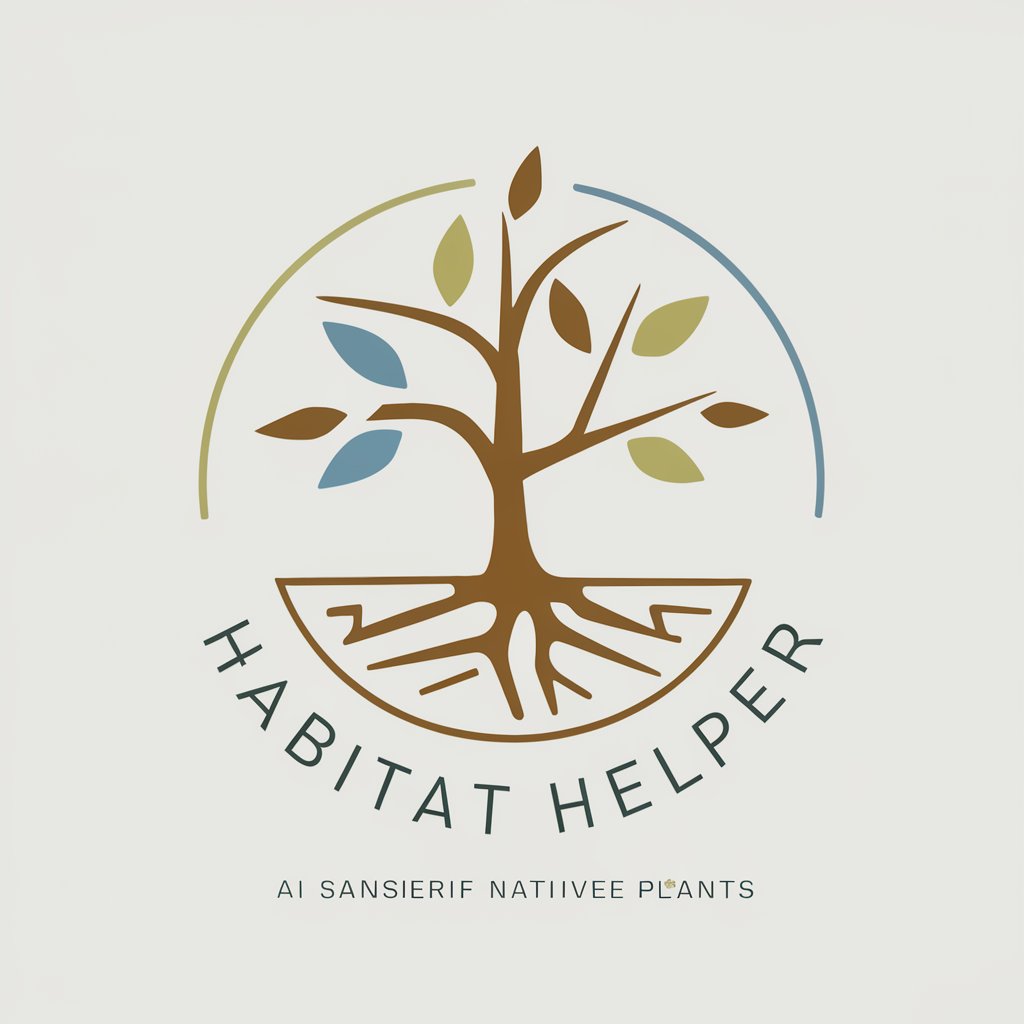
Biotope Classifier - Biotope Identification Tool

Welcome! Let's explore the biotopes of Finland together.
Deciphering Nature with AI
Design a logo that combines elements of forest and water...
Create a modern logo inspired by natural landscapes...
Develop a logo that reflects the diversity of northern European biotopes...
Craft a logo that balances professionalism with organic, nature-inspired elements...
Get Embed Code
Overview of Biotope Classifier
Biotope Classifier is a specialized AI tool designed to analyze and classify biotopes based on photographs, specifically within the climatic zones of Finland, encompassing both hemiboreal and boreal regions. The system is trained to recognize and detail various elements of a habitat, such as vegetation types, soil characteristics, and the presence of water bodies, among others. It excels in providing a detailed description of the biotope, summarizing the habitat succinctly, and classifying the biotope into specific classes as per an extensive knowledge base of habitat types. A typical scenario might involve a user uploading a photograph of a landscape, and Biotope Classifier providing an analysis that highlights the types of vegetation present, the nature of the soil, and the overall classification of the habitat, aiding in ecological studies, land management, or educational purposes. Powered by ChatGPT-4o。

Key Functions of Biotope Classifier
Detailed Biotope Description
Example
For a photo depicting a dense forest, Biotope Classifier might describe the layers of canopy, the diversity of plant species, the presence of moss or lichens on trees, and any indications of wildlife activity.
Scenario
Used by ecologists or environmental scientists to understand the composition and health of a forest ecosystem for conservation or research purposes.
Biotope Summary
Example
From a comprehensive description of a wetland area, the system can provide a concise summary, mentioning key features such as the dominance of reedbeds, the presence of standing water, and the likelihood of it being a habitat for certain bird species.
Scenario
Helpful for educators or students who need a quick overview of a habitat's characteristics for academic or fieldwork preparations.
Biotope Classification
Example
Given an image of a rocky terrain with sparse vegetation, the classifier might categorize it as 'Rock outcrop and scree; Rock meadow' based on the vegetation pattern and geological features observed.
Scenario
Useful for land use planners or environmental consultants needing to categorize land for zoning, conservation, or development projects.
Primary Users of Biotope Classifier
Environmental Scientists and Ecologists
These professionals can leverage the detailed analyses for research, conservation efforts, or monitoring biodiversity, gaining insights into habitat conditions and species distributions.
Land Use Planners and Environmental Consultants
These users benefit from the classifier's ability to categorize land into specific biotope types, aiding in making informed decisions regarding land development, management, or conservation.
Educators and Students
Biotope Classifier serves as an educational tool, providing detailed descriptions and classifications that can enhance learning and understanding of different habitat types and their characteristics.

How to Use Biotope Classifier
1
Start with a visit to yeschat.ai to access a free trial, no login or subscription required.
2
Upload a clear, high-quality photo of the biotope you wish to classify.
3
Describe any specific details or features of the biotope in the photo that you think are relevant.
4
Submit the photo and details for analysis. The tool will process the image and any provided information.
5
Review the biotope classification provided by the tool, along with the habitat description and relevant ecological information.
Try other advanced and practical GPTs
Atheist Dream
Exploring atheism with AI-powered insight

Essay Assistant
Enhance Essays with AI-Powered Insights

Creative Spark
Ignite Your Marketing with AI-Powered Insights

Unreal Expert
Empowering Creators with AI-Powered Unreal Engine Expertise

PosterPal | Make your own posters! 🎨
Transform ideas into posters with AI

Whittlers Companion
Craft, Visualize, Carve – Seamlessly

Gangas de Vuelo
AI-powered, hassle-free flight finder

M&A GPT
AI-powered M&A advisory at your fingertips

MTG Deck Builder
Build Winning Decks with AI Expertise

Science of Intelligence Expert
Unraveling the Depths of Intelligence with AI

Strategy Navigator
Empower Your Strategy with AI Insight

Terpene Tracker GPT
AI-Powered Cannabis Analysis at Your Fingertips

Biotope Classifier FAQs
What types of biotopes can Biotope Classifier identify?
Biotope Classifier is capable of identifying a wide range of biotopes, including forests, meadows, wetlands, and aquatic environments, with a special focus on those found in hemiboreal and boreal zones.
How accurate is Biotope Classifier?
While the tool strives for high accuracy by leveraging advanced AI models and a comprehensive database, accuracy can vary based on image quality and the distinctiveness of the biotope's features.
Can Biotope Classifier identify specific species within a biotope?
The primary focus is on the broader habitat classification rather than identifying individual species. However, it may highlight dominant or characteristic species as part of the habitat description.
Is Biotope Classifier useful for educational purposes?
Yes, it's a valuable educational tool for students, researchers, and nature enthusiasts looking to learn more about habitat types, ecological characteristics, and biodiversity.
What should I do if the tool does not recognize the biotope?
Ensure the photo is clear and well-lit. If issues persist, it might be due to the biotope's rarity or complexity. Consulting a specialist or providing additional context may improve classification results.





